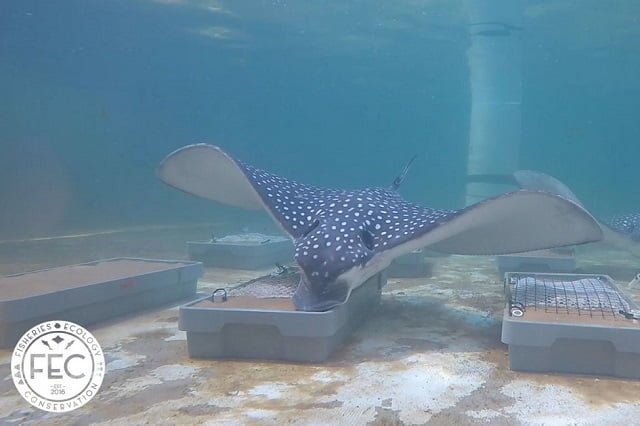By Shaun McGillis, Portland State University
A New Study Examines The Effects Of Four Pesticides Registered For Use In Forest Management On The Soft-Shell Clam, Mya Arenaria.
According to a study recently published in the journal Science of the Total Environment, exposure to chronic, environmentally relevant concentrations of pesticides registered for use in forest management had adverse effects on the soft-shell clam, Mya arenaria.
The article, co-authored by researchers at Portland State University and the U.S. Geological Survey, monitored the clams in laboratory conditions over 90 days. During that time, they exposed clams to pesticides at concentrations that may occur in their natural estuarine ecosystems due to runoff from upstream applications.
The researchers monitored the effects of the pesticides atrazine, hexazinone, indaziflam, and bifenthrin, individually and in combination, on the soft-shell clams’ shell growth, condition, feeding rates, mortality, and contaminant uptake with collection periods occurring every thirty days of the study. The data indicate exposure to some chemicals caused a high mortality rate, both individually and in combination, “which was surprising due to the low concentrations we used in the study” said lead author Allie Tissot. Additionally, the research team found accumulation of the compounds in the tissue of the shellfish and reduced clam condition and feeding.
According to the study’s authors, the findings underscore the need for a more comprehensive understanding of how pesticides used upstream of estuarine and marine ecosystems impact aquatic species and ecosystem health. Forest managers commonly use three of the pesticides examined in the study to control the expansion of unwanted species that threaten forest lands; some of these compounds are also used in farming Christmas trees and managing vegetation in public right-of-ways. Runoff and spray drift then transports the pesticides into waterways that carry them downstream, where it enters coastal transition zones.
The study is novel in examining the effects of pesticide exposure over a long period and at environmentally relevant concentrations. According to Tissot, “studying the long-term effects of these compounds in combination and at levels that our lab has detected in coastal transition zone ecosystems is critical to our understanding of how forestry management practices may impact these culturally and economically important ecosystems. This is an important data gap to fill as research on these compounds’ toxicity typically focuses on individual compound effects at high concentrations to determine lethality, which while necessary for understanding compound toxicity, can miss sub-lethal effects that can have long term impacts on these systems. ”
Alexandra Tissot, a graduate student at Portland State University, co-authored the article, with Portland State faculty members Elise Granek, Ann Thompson, and former PhD student Kaegan Scully-Engelmeyer. Michelle Hladik and Patrick Moran of the U.S Geological Survey also contributed. Oregon Sea Grant funded the research.
Stay Always Informed
Join our communities to instantly receive the most important news, reports, and analysis from the aquaculture industry.
Reference (open access):
Alexandra G. Tissot, Elise F. Granek, Anne W. Thompson, Michelle L. Hladik, Patrick W. Moran, Kaegan Scully-Engelmeyer. The silence of the clams: Forestry registered pesticides as multiple stressors on soft-shell clams. Science of The Total Environment, 2021, 152053, ISSN 0048-9697, https://doi.org/10.1016/j.scitotenv.2021.152053.
Editor at the digital magazine AquaHoy. He holds a degree in Aquaculture Biology from the National University of Santa (UNS) and a Master’s degree in Science and Innovation Management from the Polytechnic University of Valencia, with postgraduate diplomas in Business Innovation and Innovation Management. He possesses extensive experience in the aquaculture and fisheries sector, having led the Fisheries Innovation Unit of the National Program for Innovation in Fisheries and Aquaculture (PNIPA). He has served as a senior consultant in technology watch, an innovation project formulator and advisor, and a lecturer at UNS. He is a member of the Peruvian College of Biologists and was recognized by the World Aquaculture Society (WAS) in 2016 for his contribution to aquaculture.



